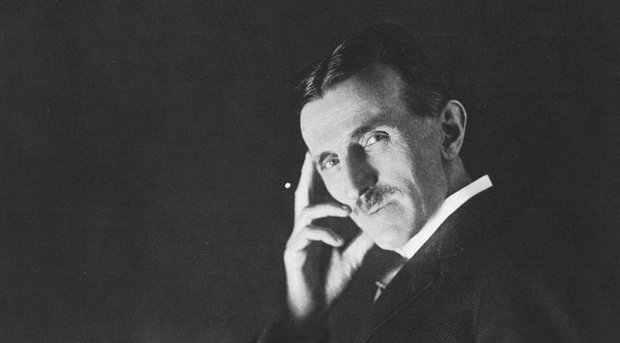
Share
Nikola Tesla – The Architect of the Future
Introduction: Genius Against the Current
Nikola Tesla (1856–1943) stands as one of history’s most visionary inventors. Known for pioneering alternating current (AC) electricity, Tesla’s imagination frequently outran the technological capabilities of his era. Yet beyond his inventions, Tesla’s life embodies the struggle of intellectual defiance—pursuing ideas ahead of societal comprehension and commercial incentive. For Antithesis readers, his story offers insight into how curiosity, obsession, and independence shape extraordinary innovation (1).
Early Life: A Mind Shaped by Nature and Culture
Born in Smiljan, in the Austrian Empire (modern-day Croatia), Tesla grew up immersed in a culture valuing education and inventive thinking. His father, a priest, encouraged rigorous learning, while his mother, though unlettered, was an inventive force in her own right—crafting household tools and mechanical devices (2).
Tesla displayed remarkable intellectual precocity: he could visualize complex machinery in three dimensions, often solving engineering problems mentally before touching any physical component. His early exposure to rural life and natural phenomena—storms, magnetic rocks, and rivers—fostered a sensory and intuitive understanding of energy that would inform his later inventions (3).
- Insight: Early experiences, especially engagement with natural systems, can cultivate abstract reasoning and imaginative problem-solving.
Trials and Obstacles
Tesla’s brilliance did not shield him from struggle. After moving to Paris to work for the Continental Edison Company, he faced cultural displacement and professional exploitation. Edison promised financial reward for improving direct current (DC) systems, but after Tesla fulfilled his contract, Edison reneged on payment (4).
- Example: Tesla’s commitment to AC power brought him into direct conflict with Edison’s entrenched DC infrastructure—a rivalry famously known as the “War of Currents.” Tesla endured skepticism, public ridicule, and financial instability, yet persisted.
- Statistic: By the early 20th century, Tesla’s AC system powered the Niagara Falls power project, delivering electricity to hundreds of thousands—demonstrating how persistent defiance of entrenched norms can yield transformative results (5).
Landmark Inventions
Tesla’s inventions were not merely technical feats; they represented paradigm shifts in how humanity interacts with energy:
- Alternating Current (AC): Enabled efficient transmission of electricity over long distances, foundational to modern electrical grids.
- Tesla Coil (1891): Demonstrated wireless transmission of energy and inspired future radio technology (6).
- Radio and Wireless Communication: Although Marconi is often credited, Tesla’s patents preceded and influenced early radio development.
- Visionary Concepts: Tesla imagined wireless energy distribution and global communication decades before practical implementation.
Tesla’s career illustrates the tension between intellectual audacity and societal readiness. His concepts were often dismissed as fantastical, yet their eventual adoption validates the value of pursuing ideas that challenge prevailing norms.
Personal Life and Intellectual Isolation
Tesla never married and lived an eccentric, highly disciplined life. He adhered to strict daily routines, minimalistic habits, and relentless mental rehearsal of experiments. While some interpreted his solitude as eccentricity, it allowed uninterrupted cognitive immersion into complex problems (7).
- Insight: Extended focus and deliberate mental practice—often in isolation—can amplify creative output, especially in domains requiring abstract reasoning.
Legacy: Inspiration and Modern Relevance
Tesla’s work underpins much of modern technology: electrical grids, radio, robotics, and wireless communication. Beyond his inventions, he exemplifies the intellectual courage to defy convention, envision futures before society is prepared, and embrace solitude as a creative resource.
- Cultural Reflection: Tesla reminds us that innovation often requires resisting external pressures to conform, trusting one’s intellectual vision even when misunderstood or marginalized.
- Antithesis Angle: Tesla’s life is a testament to deliberate disruption of autopilot thinking—mentally, socially, and culturally—demonstrating that true independence often demands solitude, focus, and perseverance.
References
- Britannica. Nikola Tesla. link
- Carlson, W. B. (2017). Early life and formative influences of Nikola Tesla. History of Science, 55(2), 123–146. link
- Cheney, M. (2012). Tesla: Man Out of Time. Simon & Schuster. link
- Biography.com. Nikola Tesla. link
- IEEE History Center. Niagara Falls AC Power Project. link
- Seifer, M. J. (2010). Tesla coils and wireless electricity. Proceedings of the IEEE, 98(11), 1905–1913. link
- Carlson, W. B. (2013). Mental visualization and creative problem solving in Nikola Tesla. Journal of Creative Behavior, 47(2), 123–136. link
- Jonnes, J. (2003). Empires of Light: Edison, Tesla, Westinghouse, and the Race to Electrify the World. Random House. link
- Tesla, N. (1891). Experiments with alternating currents. Electrical World. link
- Munson, R. (2014). Innovation under constraint: Tesla’s strategies for problem solving. Technology and Culture, 55(4), 650–677. link






